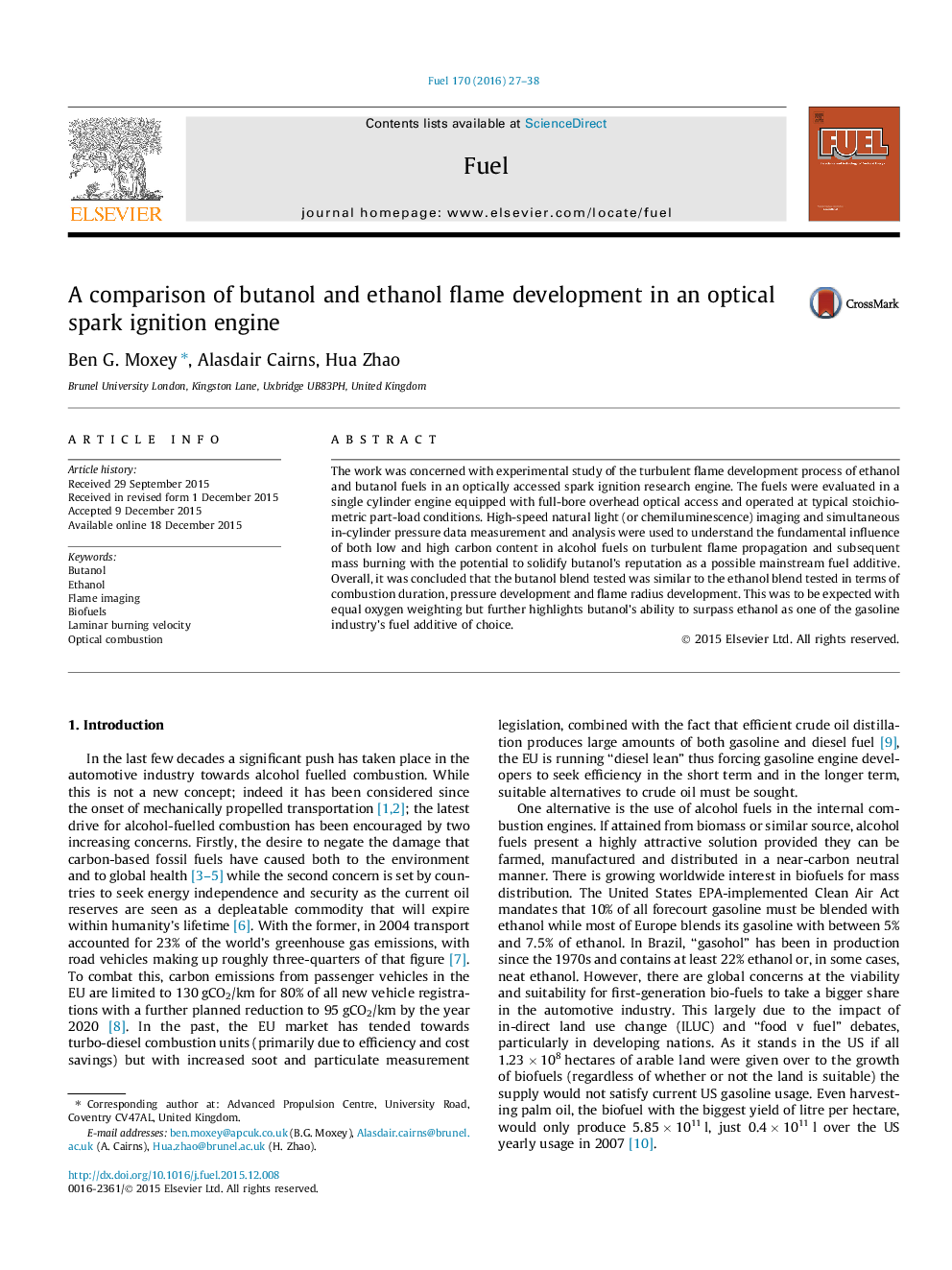| Article ID | Journal | Published Year | Pages | File Type |
|---|---|---|---|---|
| 205285 | Fuel | 2016 | 12 Pages |
The work was concerned with experimental study of the turbulent flame development process of ethanol and butanol fuels in an optically accessed spark ignition research engine. The fuels were evaluated in a single cylinder engine equipped with full-bore overhead optical access and operated at typical stoichiometric part-load conditions. High-speed natural light (or chemiluminescence) imaging and simultaneous in-cylinder pressure data measurement and analysis were used to understand the fundamental influence of both low and high carbon content in alcohol fuels on turbulent flame propagation and subsequent mass burning with the potential to solidify butanol’s reputation as a possible mainstream fuel additive. Overall, it was concluded that the butanol blend tested was similar to the ethanol blend tested in terms of combustion duration, pressure development and flame radius development. This was to be expected with equal oxygen weighting but further highlights butanol’s ability to surpass ethanol as one of the gasoline industry’s fuel additive of choice.
